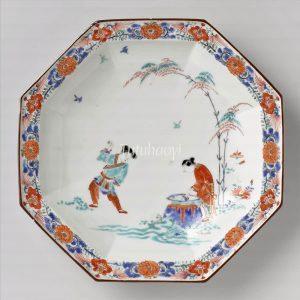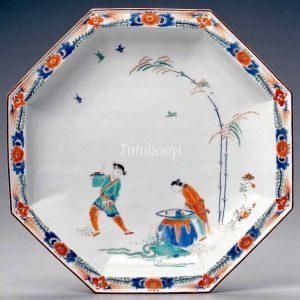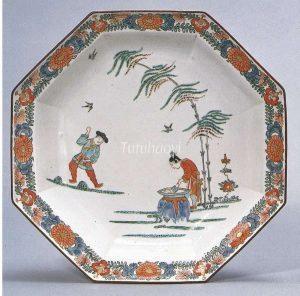Sima Guang Breaking a Vat to Rescue His Playmate
司马光砸缸
© Tutuhaoyi.com owns the copyright of the description content for the images attached. Quoting all or part of the description content on this page is permitted ONLY IF ‘Tutuhaoyi.com’ is clearly acknowledged anywhere your quote is produced unless stated otherwise. (本页描述内容版权归Tutuhaoyi.com所有,转发或引用需注明 “Tutuhaoyi.com”, 侵权必究, 已注开源信息的条目除外。)
Sima Guang (司马光, 1019-1086) is an eminent scholar and politician during the Northern Song dynasty (960-1127) in China. His greatest achievement in life is compiling a chronicle of 1,362 years’ history of China from 403 BCE to 959 CE. The book is entitled Zizhi Tongjian (资治通鉴), or ‘Comprehensive Mirror in Aid of Governance’. In his biography in the official History of the Song (dynasty) (宋史), there is an anecdote which exemplifies young Sima Guang’s courageous spirit and quick wit of lateral thinking.
One day, Sima Guang was playing with a group of children in the garden, when one of his playmates climbed up a rock formation and slipped into a gigantic water vat. Shocked by the horrendous sight of a boy disappearing under the water, the group fled in fright. Only Sima Guang remained on the spot and managed to break a hole on the vat with a piece of rock. The water rushed out and the boy survived. Soon afterwards, his heroic deed became inspiration for artists who created corresponding paintings around the capital city (Chapter 336, The History of Song). This scene is known as ‘Shiba-Onko’ in Japan and, as ‘Hob-in-the-Well’ in Europe after it was copied by kilns in Chelsea, England and Meissen, Germany.
literature research by Dr Yibin Ni
Fig1: porcelain brush holder with underglaze blue decoration, Chongzhen (1628-44), courtesy of The Cleveland Museum of Art
Fig 2: hard-paste porcelain with coloured enamel and gilded decoration, Kakiemon kilns, Japan, ca. 1670-1690, courtesy of The Rijksmuseum, Amsterdam
Fig 3: hard-paste porcelain with coloured enamel and gilded decoration, Kakiemon kilns, Japan, ca. 1670-1690, courtesy of The Musée Ariana, Geneva
Fig 4: porcelain snuff bottle with underglaze blue decoration, Yongzheng period (1723-35), courtesy of Palace Museum, Beijing
Fig 5: hard-paste porcelain with coloured enamel and gilded decoration, Meissen, Germany, ca. 1730, courtesy of The Museum of Fine Arts, Boston
Fig 6: hard-paste porcelain with coloured enamel and gilded decoration, Chelsea, England, ca. 1730, courtesy of Inter-Influence of Ceramic Art in East and West, Idemitsu Museum of Arts, Tokyo, 1984, Pl. 91
Fig 7: porcelain snuff-bottle with underglaze blue decoration, Qianlong period (1736-95), courtesy of Princeton University Art Museum, Object number: y1936-682






